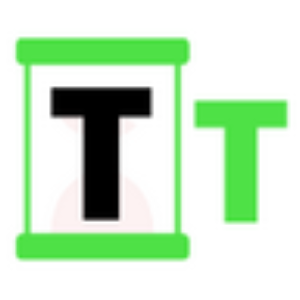Block S&P 500: A Monumental Leap for Jack Dorsey’s Fintech Empire
9 min read
BitcoinWorld Block S&P 500: A Monumental Leap for Jack Dorsey’s Fintech Empire The financial world is currently buzzing with truly monumental news: Block, the innovative payments company helmed by Twitter co-founder Jack Dorsey, is poised to make a significant leap by joining the esteemed S&P 500 index. This isn’t just another corporate announcement; it marks a pivotal moment for Jack Dorsey’s Block , signaling its maturation and increasing influence within the dynamic fintech stock market . For investors and enthusiasts alike, this inclusion, effective before trading opens on July 23rd, as reported by Bitcoin Magazine on X, offers a fresh perspective on the company’s trajectory and its potential impact on the broader economy. It’s a testament to Block’s journey from a disruptive startup to a major player, and it naturally sparks questions about what this means for SQ stock analysis and the future of digital finance. What Does S&P 500 Inclusion Mean for Block S&P 500? The S&P 500 is more than just a list of companies; it’s widely considered the benchmark for large-cap U.S. equities, representing approximately 80% of the total market capitalization. For a company like Block to earn its place alongside corporate giants, it must meet stringent criteria, including market capitalization, liquidity, and sustained profitability. Block’s inclusion, replacing Hess Corp., is a powerful endorsement of its financial health and market standing. So, what are the tangible benefits of this prestigious entry for Block S&P 500 ? Increased Visibility and Prestige: Being part of the S&P 500 significantly elevates Block’s profile. It signals stability and reliability to a wider range of investors, both institutional and retail, who often look to the index as a barometer of market strength. Enhanced Liquidity: A substantial portion of investment funds, particularly passive index funds and exchange-traded funds (ETFs), are designed to track the S&P 500. This means that as Block enters the index, these funds will automatically purchase its shares (SQ stock) to rebalance their portfolios, leading to a surge in demand and improved trading liquidity. Lower Cost of Capital: Increased investor confidence and liquidity can translate into a lower cost of capital for Block. This means the company might find it easier and cheaper to raise funds for future investments, expansions, or acquisitions, further fueling its growth. Broader Investor Base: Many institutional investors, pension funds, and wealth managers have mandates to invest only in S&P 500 companies. Block’s inclusion opens the door to this vast pool of capital, diversifying its shareholder base and potentially stabilizing its stock price over the long term. In essence, joining the S&P 500 is akin to receiving a gold star in the corporate world, confirming Block’s status as a robust, influential, and investment-worthy entity. The Visionary Behind the Move: Understanding Jack Dorsey’s Block At the heart of Block’s innovative trajectory is its co-founder and CEO, Jack Dorsey . Known globally for co-founding Twitter, Dorsey’s pivot towards Block (formerly Square) and his passionate advocacy for Bitcoin have defined the company’s unique path. His vision for a decentralized financial future, where individuals have greater control over their money, permeates Block’s various ventures. Block’s ecosystem is multifaceted, encompassing: Square: The foundational business, providing payment processing hardware and software for small and medium-sized businesses (SMBs). This includes point-of-sale systems, payroll services, and business loans, empowering countless entrepreneurs. Cash App: A hugely popular mobile payment service that allows users to send and receive money, invest in stocks, and even buy and sell Bitcoin. Cash App has become a significant driver of Block’s growth, especially among younger demographics. TBD: A platform focused on building decentralized financial services, particularly around Bitcoin. This aligns with Dorsey’s belief in Bitcoin as the internet’s native currency. Spiral (formerly Square Crypto): An independent team dedicated to advancing Bitcoin development through open-source projects. Dorsey’s steadfast commitment to Bitcoin, often expressing his belief that it will eventually unite the world, positions Jack Dorsey’s Block as a unique player in the financial sector. Unlike many traditional fintech companies, Block actively explores the intersection of conventional payments and the burgeoning world of cryptocurrency, striving to make digital assets more accessible and useful for everyday transactions. This forward-thinking approach has not only fueled its growth but also differentiated it in a crowded market. How Will SQ Stock React to This Landmark SQ Stock Analysis? For investors holding or considering SQ stock , the S&P 500 inclusion naturally raises questions about its immediate and long-term price performance. Historical data suggests that companies often experience a positive bump in their stock price both leading up to and immediately following S&P 500 inclusion. This “inclusion effect” is primarily driven by the mandatory buying from index funds. However, a thorough SQ stock analysis requires looking beyond the immediate surge. While the initial demand from index funds is a powerful catalyst, the long-term performance of Block’s stock will ultimately depend on its underlying fundamentals, strategic execution, and ability to navigate market challenges. Potential scenarios for SQ stock : Short-Term Volatility: While index funds buy, some existing investors might use the opportunity to take profits, leading to short-term price fluctuations. However, the net effect is typically positive. Increased Analyst Coverage: Greater visibility often leads to more analyst coverage, which can bring more scrutiny but also more informed investment decisions. Investor Confidence: The S&P 500 stamp of approval can boost overall investor confidence, potentially attracting a new class of long-term holders who value stability and proven performance. Investors should remember that while S&P 500 inclusion is a significant milestone, it is not a guarantee of perpetual stock appreciation. Block’s ability to innovate, expand its user base, manage regulatory risks, and execute its Bitcoin-centric strategy will be crucial for sustained growth. Reshaping the Fintech Stock Market: Block’s Broader Impact Block’s journey into the S&P 500 is not just about one company; it reflects broader trends reshaping the entire fintech stock market . The financial technology sector has been a hotbed of innovation, challenging traditional banking models and offering more accessible, efficient, and user-friendly financial services. Block stands at the forefront of this transformation. Block’s influence extends across several key areas: Democratizing Finance: Through products like Cash App and its Square ecosystem for SMBs, Block has made financial tools accessible to individuals and small businesses that might have been underserved by traditional banks. This democratization of finance is a hallmark of the fintech revolution. Bridging Crypto and Traditional Finance: Block’s unwavering commitment to Bitcoin, coupled with its mainstream payment services, positions it uniquely to bridge the gap between the nascent world of cryptocurrencies and conventional financial systems. This integration is crucial for wider crypto adoption. Competitive Landscape: Block’s success story puts pressure on both legacy financial institutions and other fintech players. Its agility, innovation, and focus on user experience set a high bar, driving competition and fostering further advancements across the sector. The inclusion of Block in the S&P 500 underscores the growing importance and maturity of the fintech sector within the broader economy. It signals that digital payment solutions, mobile banking, and even cryptocurrency-related services are no longer niche but integral components of modern finance. This could pave the way for more fintech companies to achieve similar recognition, further diversifying the S&P 500 and reflecting the changing economic landscape. Navigating the Future: What’s Next After S&P 500 Inclusion? While S&P 500 inclusion is a significant achievement, it also brings new responsibilities and challenges. As a larger, more visible public company, Block will face increased scrutiny from investors, analysts, and regulators. The journey doesn’t end here; it merely transitions into a new phase of growth and strategic development. What might the future hold for Block? Continued Innovation: To maintain its competitive edge, Block must continue to innovate across its product lines, from enhancing Cash App features to expanding its Square offerings and advancing its Bitcoin initiatives. Global Expansion: While Block has a strong presence in the U.S., there are vast untapped international markets where its solutions could thrive, offering new avenues for growth. Regulatory Navigation: The fintech and crypto spaces are subject to evolving regulatory frameworks. Block will need to skillfully navigate these changes to ensure compliance while pursuing its vision for decentralized finance. Balancing Growth and Profitability: As a mature public company, Block will face increasing pressure to balance aggressive growth strategies with sustainable profitability, a common challenge for high-growth tech firms. Jack Dorsey’s Long-Term Vision: Dorsey’s long-term commitment to Bitcoin and decentralization suggests that Block will continue to push the boundaries of financial technology, potentially venturing into new areas like decentralized identity or web5 applications. The S&P 500 inclusion marks Block’s arrival as a financial titan, but its future success will depend on its ability to execute on these strategic imperatives, maintain its innovative spirit, and adapt to an ever-changing financial landscape. Conclusion: A New Era for Block and Beyond Block’s highly anticipated entry into the S&P 500 is far more than just a procedural update to an index; it is a profound declaration of the company’s success, resilience, and pivotal role in shaping the future of finance. For Jack Dorsey’s Block , it represents the culmination of years of innovation, strategic growth, and a steadfast commitment to empowering individuals and businesses through accessible financial tools. This milestone not only validates Block’s business model but also highlights the increasing mainstream acceptance of fintech and digital payments within the traditional stock market . As SQ stock gains unprecedented visibility and institutional backing, its journey will undoubtedly serve as a crucial barometer for the evolving landscape where conventional finance intersects with the revolutionary potential of cryptocurrency. It marks a new era for Block, solidifying its position as a leading force in the global financial technology arena and paving the way for further transformative developments. Frequently Asked Questions (FAQs) 1. What is the S&P 500, and why is Block’s inclusion significant? The S&P 500 is a stock market index that represents the performance of 500 of the largest publicly traded companies in the United States. Block’s inclusion is significant because it signals the company’s financial strength, stability, and market leadership, making it eligible for investment by a vast number of index funds and institutional investors. It’s a stamp of approval from the broader financial community. 2. When will Block officially join the S&P 500? Block is set to join the S&P 500 before trading opens on July 23rd, replacing Hess Corp. 3. How does S&P 500 inclusion typically affect a company’s stock? Historically, companies entering the S&P 500 often experience a positive surge in their stock price due to increased demand from index funds that must purchase shares to track the index. This “inclusion effect” can provide a short-term boost, but long-term performance depends on the company’s fundamental business strength and future growth prospects. 4. What are Block’s primary business segments? Block operates primarily through two main segments: the Square ecosystem, which provides payment processing and business tools for small and medium-sized businesses, and Cash App, a popular mobile payment service for individuals that also offers investing in stocks and Bitcoin. Block also has ventures like TBD and Spiral focused on Bitcoin and decentralized technologies. 5. What is Jack Dorsey’s stance on cryptocurrency, particularly Bitcoin? Jack Dorsey is a vocal advocate for Bitcoin, believing it will become the internet’s native currency and a tool for global financial empowerment. He views Bitcoin as a foundational technology for a more decentralized and equitable financial system, and his vision is deeply integrated into Block’s strategic direction, particularly through initiatives like TBD and Spiral. 6. Does S&P 500 inclusion guarantee Block’s continued success? While S&P 500 inclusion is a significant validation, it does not guarantee future success. It signifies past performance and current market standing. Block’s continued growth and profitability will depend on its ability to innovate, expand its services, manage regulatory challenges, and adapt to the evolving fintech and cryptocurrency landscapes. If you found this analysis insightful, consider sharing it with your network! Your support helps us continue to deliver timely and comprehensive insights into the world of cryptocurrency and finance. Share this article on your social media channels and spark a conversation about Block’s landmark achievement! To learn more about the latest fintech market trends, explore our article on key developments shaping digital payments institutional adoption . This post Block S&P 500: A Monumental Leap for Jack Dorsey’s Fintech Empire first appeared on BitcoinWorld and is written by Editorial Team

Source: Bitcoin World



